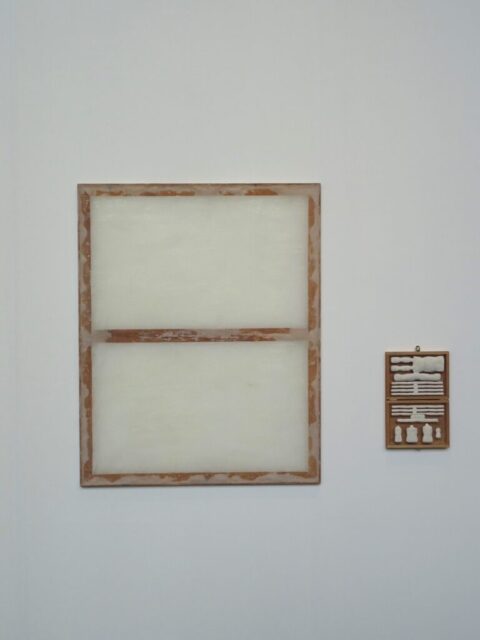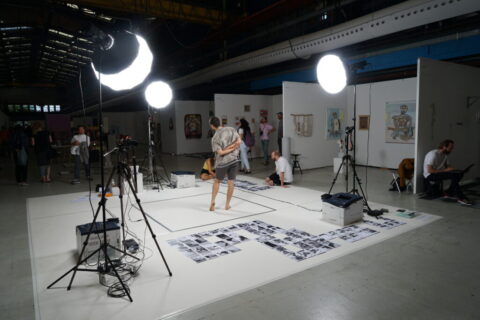In this seventh episode of the podcast series De Octopus, Nele Brökelmann speaks with artist Dagmar Marent and theatre director and artist Sam Scheuermann. Together they explore the various form writing in the sense of notation can take within the artist’s research process, and the role the viewer plays in that process.
Is there a difference between a note, a sketch, and a work? What kind of dynamics emerge between the context in which materials exist and the behavioural codes of presentation spaces (such as the theatre, the art world, or domestic settings) when the process of transformation continues without pause?
Listen to the podcast on Soundcloud or Spotify.
The conversation took place in the studio of the artist collective YAFF in Tilburg, of which Dagmar is a member. A thinking spot had been set up by the window, marking the starting point of their joint exploration of what notation means to both Dagmar and Sam. In both practices, continuous transformation and temporality play a crucial role; within that, recording what is happening – or has already happened – becomes essential. A record or observation can become a note, feeding back into the thinking and making process and shaping the kind of relationship they enter into with their audience.
Dagmar is constantly searching for materials that transform. In Behandeling 4 (Treatment 4), viewers are invited to alter the work themselves. She plays with elements, traditions, and the history of painting – as in Behandeling 5, where a painting is mummified, or in Operatie 6, which uses Betadine as a kind of ‘paint’. Out of an interest in how a work can influence someone’s daily rhythm, Dagmar often works in dialogue with others. In one such example, she places paintings behind frosted glass that can be momentarily cleared with a damp cloth, allowing for a temporary glimpse.
In her performance A study on becoming Sam explores a continuous transformation that leads nowhere. By taking and printing a photograph every two minutes, a parallel record is created – one that is constantly being re-examined. Sam moves between the theatre and the art world in search of a performance stage that creates a comfortable distance. This led to the use of a Plexiglas structure in performances such as Constructions of my Interior and Nomaden. Here, performers can step out of the space and the audience can step into it, reducing the gap between the two.

Behandeling 5: Mummified painting, 2018 – Beeswax, Damar resin, myrrh, cedar oil, castor oil – 80 cm x 1 m
Dagmar Marent
Dagmar Marent applies and questions principles of painting by using them across various media. This allows her to create a sense of distance, making it possible to view those principles in and of themselves. Her focus lies in the process of addition and removal. The residues left behind by her actions form the temporary outcomes that become her artworks. Dagmar often uses techniques and materials from art restoration processes. This approach aims to restore the (apparent) origin of the artwork – even as chemical processes continue long after the painter has declared it finished.

A Study on Becoming, This Art Fair 2022, Photo: Sam Scheuermann
Sam Scheuermann
With a background in theatre, Sam Scheuermann creates performances that investigate the performativity of physical and social constellations. She plays with social relations and ‘codes’ through the shifting of objects, the movements of performers, and the interactions they form with each other and with the space they occupy. The environments Sam stages for her performances are framed arenas in which people are free to experiment with how they relate to their immediate surroundings.
